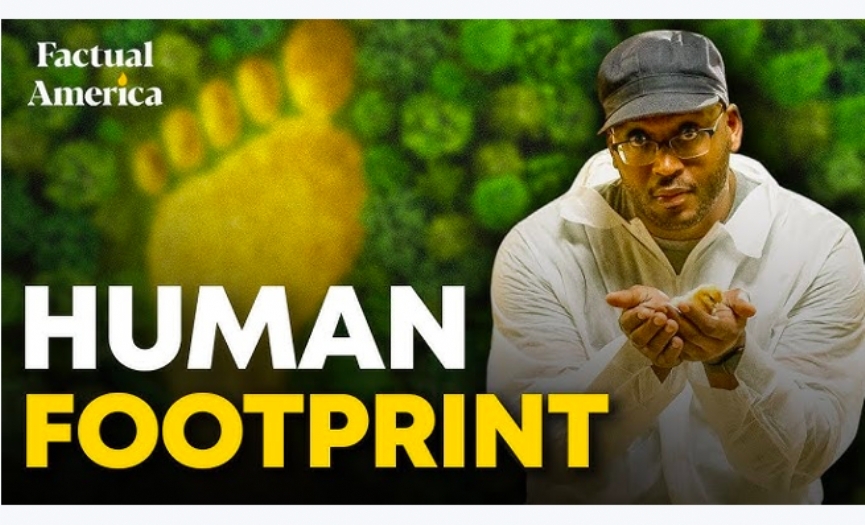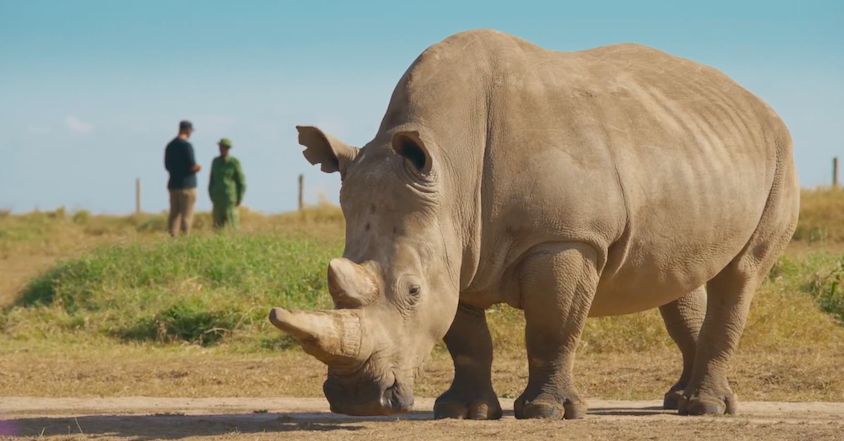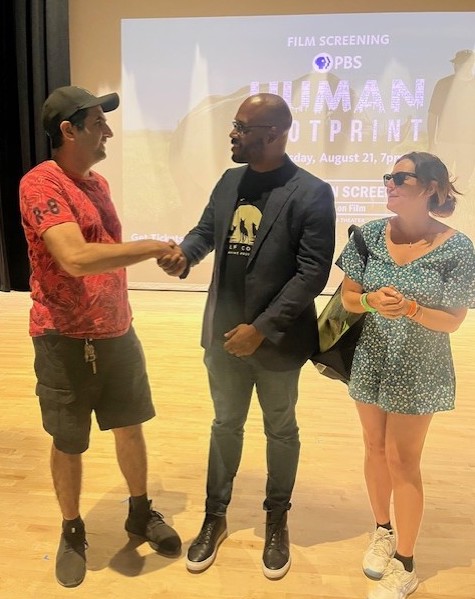
Human Footprint – PBS

By Bessy ADUT
It was a very interesting coincidence for me to see this TV Doc Series. I had originally planned to see the Antarctica 3D movie at the Science Center, followed by the Butterflies Pavilion once again. I hadn’t mentioned anything to my friend from CalArts, who had later planned that day for dinner. At the last minute, plans changed, and without knowing my prior schedule, she invited me to the screening of Human Footprint. When I looked up and saw it was at the Natural History Museum, I was very surprised of all the days, I was already going to be there! As Einstein said, I believe in miracles, and coincidences happen for a reason. I feel like me and these filmmakers and scientists were meant to meet that day.
Opening Hook
It was one of the best documentary series I’ve seen. The concept is fascinating: exploring the extinction of animals all around the world and understanding what humans can do to prevent it.
Summary
The show is hosted by a scientist who travels the globe, interviewing people devoted to different animals and their conservation, such as the white rhino. We meet passionate individuals tackling extinction, and I particularly enjoyed the brief introductions to each interviewee. The series maintains a scientific approach while also incorporating humor that warms the audience.

Analysis
The themes are compelling, and the storytelling approach reminded me of Searching for Goodness, though with much higher production value. The cinematography is impressive; everything is high quality, with beautifully executed drone shots. Editing flows smoothly, and the series carries a strong emotional resonance. It is a great example of a well-paced series that I didn’t want to end.
Context
This documentary matters today because it examines human actions driving some species to extinction. On one hand, human activity causes destruction; on the other, devoted individuals strive to prevent it. One inspiring example is the attempt to bring back the extinct white rhino, which offers a glimmer of hope for conservation.
Personal Touch
After the screening, the Q&A was especially moving. I was impressed to hear the stories of the filmmakers, who have a science background and began making videos on YouTube. Their journey was inspiring, and I was grateful to have their contact information. I hope to stay in touch with them, possibly for an interview or future advisor role when I begin production on my first feature film, which will be followed by a documentary travel series around the world on a different theme. I loved it. I believe in miracles, and coincidences happen for a reason. I felt I was meant to be at that screening to see this film and meet these PBS filmmakers. I don’t know what the future holds, but I am optimistic.
Closing Thoughts
After watching this Season 2 episode, I am eager to watch all the remaining episodes and follow the project closely. I would recommend it to all documentary lovers as it is enlightening, entertaining, and keeps both curiosity and humanity alive. This is not just a documentary; it is a mirror held to the soul of humanity, highlighting caring humans protecting animals on our shared planet.

About the Episode: “Vanishing Act”
The finale, titled Vanishing Act, dives deep into human-driven extinction from Southern California to the East African Savanna and features jaw-dropping science and unforgettable stories. Hosted by PBS’s Shane Campbell-Staton, the series explores humanity’s impact on the planet.
From fossils entombed in tar to cells frozen in hope, Shane traces extinction from pre-history to the present, meeting species at the brink of oblivion and the people who refuse to give up on them.
About the Team
Dr. Shane Campbell-Staton – Two-time Emmy-nominated host of Human Footprint, evolutionary biologist, and associate professor at Princeton University. His research focuses on how human activity drives evolutionary change in wild species. In 2022, he was named a Pew Biomedical Scholar for research on gray wolves in the Chernobyl Exclusion Zone. He is passionate about sharing science with a broad audience.
Emily Lindsey, PhD – Associate Curator and Excavation Site Director, Rancho La Brea. Dr. Lindsey’s research integrates past and modern ecosystems to understand Ice Age animals and environments, climate interactions, and human-driven extinctions. No other paleontological site has such potential to answer these questions as La Brea Tar Pits.
Cara Santa Maria, PhD – Licensed clinical psychologist, Emmy-winning journalist, science communicator, and podcaster. Her media work includes PBS SoCal’s Earth Focus, National Geographic’s Brain Games, Netflix’s Bill Nye Saves the World, and more.
Nate Dappen, PhD – Director/Creator of Human Footprint and co-owner of Day’s Edge Productions. A biologist-turned-filmmaker, he co-created and directed the Emmy-nominated PBS series alongside Shane Campbell-Staton. His work explores humanity’s complex global impact on the natural world.
Final Thoughts
It was both fascinating and saddening to witness the extinction of animals like rhinos, driven by climate change, or whales, threatened by overconsumption. Yet, the documentary also offers a sense of hope. We saw how, through genetics, humans have been able to bring back species such as the white rhino, which is a version different from the original, but still a hopeful step for the future.
Related News










